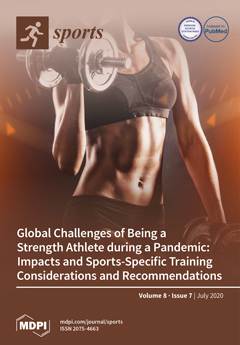Ramadan observance is characterized by several changes in behaviors, such as food and sleep, which could affect physical and cognitive performance. The aim of the present study was to investigate the effects of a 35-min nap (N35) opportunity on physical performance during the 5-m shuttle run test (5mSRT); attention; feelings; mood states; and perceptual measures of stress, fatigue, and muscle soreness during Ramadan observance. Fourteen physically active men (22 ± 3 years, 177 ± 4 cm, 76 ± 5 kg) were tested after a no-nap condition (N0), N35 15 days before Ramadan (BR), the last 10 days of Ramadan (DR), and 20 days after Ramadan (AR). Measures included the digit cancellation test (attention estimation), the profile of mood state (POMS), and the Hooper questionnaires. After a 5-min standard warm-up, participants performed the 5mSRT (6 × 30 s with 35 s in between; best distance (BD), total distance (TD), and fatigue index (FI) were recorded), along with the rating of perceived exertion (RPE) after each test repetition. After the 5mSRT test, participants responded to the feeling scale (FS). The results showed that TD and FI during the 5mSRT were not affected by Ramadan observance. However, BD was significantly lower than DR compared to AR after N0 (∆ = −4.3 ± 1.3%;
p < 0.01) and N35 (∆ = −2.6 ± 1.0%;
p < 0.05). After N0, attention decreased significantly at DR in comparison with BR (
p < 0.05) and AR (
p < 0.001). BD and TD improved after N35 compared to N0 at BR (∆ = +4.4 ± 2.1%,
p < 0.05 for BD and ∆ = +4.8 ± 1.6%,
p < 0.01 for TD), DR (∆ = +7.1 ± 2.2%,
p < 0.05 for BD and ∆ = +5.1 ± 1.6%,
p < 0.01 for TD), and AR (∆ = +5.5 ± 1.5%,
p < 0.01 for BD and ∆ = +5.2 ± 1.2%,
p < 0.001 for TD). A significant increase in attention was observed after N35 in comparison with N0 at DR (
p < 0.01) and AR (
p < 0.01). However, no changes were found for the perception of mood states, stress, sleep, muscle soreness, and the FI during the 5mSRT. Also, N35 was better than N0 for RPE at DR (
p < 0.05), feelings at AR (
p < 0.05), and fatigue estimation at AR (
p < 0.01). A 35-min nap opportunity may have beneficial effects on physical and cognitive performances before, during, and after Ramadan.
Full article






